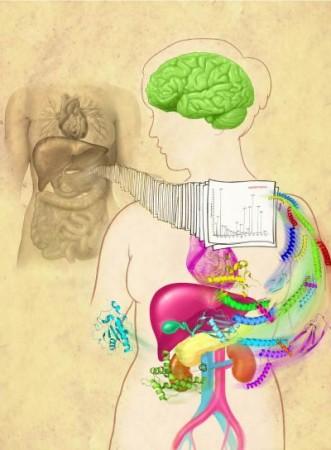
Two independent research bodies simultaneously announced drafts of the human proteome, which is the protein equivalent of human genome. One of the drafts was created by researchers at Bangalore, India while the other was from Germany.
The research team from Bangalore mapped proteins coded by 17,924 genes, which is about 84 percent of all genes that are known to code for proteins. The announcement was made by Indian scientists in Bangalore, India, at a press conference.
"India is at the forefront of proteome research," scientists from Bangalore said at the press meet, "We weren't involved in the Human Genome Project, but we are leading the world in creating a complete database for proteins."
"It is a surprising co-incidence that both of our groups have simultaneously worked on this (proteome draft) without knowing each other's work," said Dr. Harsha Gowda, from the Institute of Bioinformatics, Bangalore. He led the team from Bangalore along with Dr. Keshava Prasad, also from IOB.
Proteins are complex molecules that are made by the cells in the body using instructions from genes. The Human Genome Project had created ripples in the scientific community back in 2003 by allowing researchers to look for specific genes that were involved in development or disease. The new directory will help scientists explore origin and function of proteins.
In addition to the proteome draft map, researchers found 193 proteins, which are made by parts of the human genome that was considered to be ancient and non-functional.
"It will be interesting to compare our datasets to extend our understanding of the human proteome," said Gowda.
Some of the "missing proteins" were found in brain tissue samples, meaning that researchers are now one step close to finding cause and cure of several disorders including chronic meningitis and epilepsy.
"This is indeed a breakthrough research," said P. Satish Chandra, Director/ Vice Chancellor of the National Institute of Mental Health and Neuro Sciences (NIMHANS).
Researchers at Bangalore collaborated with Akhilesh Pandey at The Johns Hopkins University to create the database for proteins. The team obtained samples from 30 different tissues and used molecular scissors to break the proteins into smaller bits called peptides. Researchers then used mass spectrometry to find proteins' relative abundance in the sample. The samples were derived from both adult and fetal tissues. Researchers found several proteins that were expressed only in early developmental stages.
"By generating a comprehensive human protein dataset, we have made it easier for other researchers to identify the proteins in their experiments," said Pandey in a press statement. "We believe our data will become the gold standard in the field, especially because they were all generated using uniform methods and analysis, and state-of-the-art machines."
Two protein databases
The second, independent proteome draft was published by Bernhard Kuster of the Technische Universitat Munchen in Germany and his colleagues. Kuster and team catalogued about 92 percent of the estimated 19,629 proteins found in humans.
The team used mass spectrometry and in-memory computing to create the database. The team also found proteins that were coded by genes that were previously considered to be obsolete.
Paradigm shift in protein research
Proteins are complex molecules and the current "directories" could help scientists better understand genes as well as gene-environment interactions. One key aspect in both the studies was the discovery of "new proteins."
The finding creates as many questions as it answers. But, what's certain is that despite sifting through genetic data for 11 years, scientists haven't figured out what a large portion of the genome does.
Both the research teams agree that the human genome is much more complex that previously assumed.
"The datasets are complementary in many ways and the research community now has the advantage of referring to multiple lines of evidence for each protein, coming from independent laboratories," said Gowda.
"I think the Pandey paper is a great piece of work and both studies substantially advance our understanding of the human proteome and genome," said Bernhard Kuster, lead author of the German study.
Differences in Maps
There are major differences in the methods used by both the teams. Gowda said that his team had to "start the research from scratch" and used single mass spectrometry platform to generate a single dataset while most of the used data by Kuster and colleagues was already available on public domain and was generated by different laboratories using different machines.
Gowda and team also used proteins from normal tissues and cells while Kuster obtained protein samples from both normal and cancer cell lines.
The human proteome will help understand diseases as well as design custom-made therapies for each patient.
"In the future, scientists will have access to the protein map of a person, just like we now have the genetic map," said researchers from Bangalore.
Advances in proteomics also show that scientists are now looking at different biomolecules to understand their origin and function in shaping human evolution.
Recently, researchers at Shanghai and Germany reported studying human metabolome to find how metabolites- small molecules of sugars and proteins - helped develop the human brain.
(Image Credit: Press Release)









